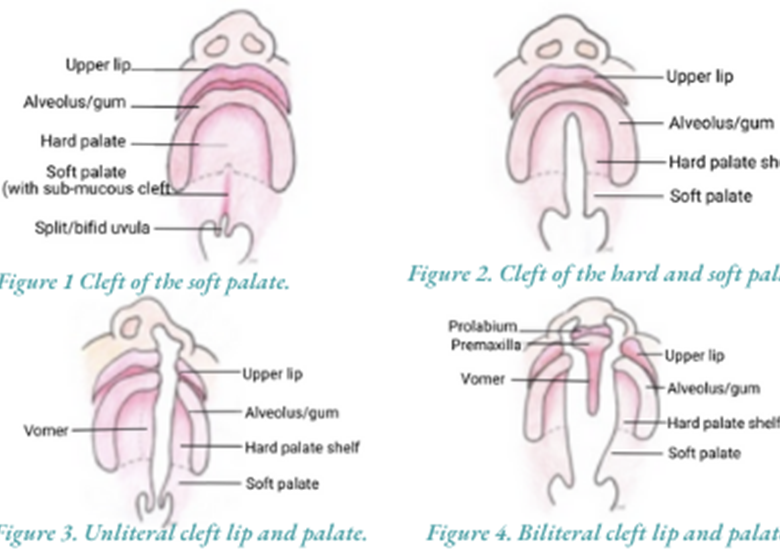
Image: With kind permission from Catherine DeBlacam Dublin Cleft Centre www.cleftcareireland.ie
A cleft palate presents in different ways, ranging from a small split of the upper lip or the soft palate to a cleft stretching from the upper lip, through the gum, the hard and soft palate. Moreover, the cleft can occur on one side of the face (i.e. unilateral) or both sides of the face (i.e. bilateral) (figures 1– 4). Because Cleft Lip & Palate is one of the most common birth anomalies in Ireland. There is a wealth of surgical, therapeutic and other specialist expertise and supports in Ireland for children born with this difference.

Feeding can be difficult for some new born babies, as the unrepaired cleft palate results in an inability to create pressure in the mouth in order to suck effectively. A member of the cleft team will assess feeding and provide advice and support along with specialised bottles and/or teats.
All children will need surgery to repair the cleft palate and/or lip. A surgeon who specialises in cleft lip and palate will see children within the first month and advise parents on the type of surgery that will be required. A cleft lip is usually repaired at around three months, and the palate repaired between 6 and 12 months in the UK and Ireland? If a child has a cleft in the gum this is usually not repaired until they are older when the permanent teeth erupt. The surgeon will assess the children as they grow to monitor facial growth, appearance and speech, and advise if any further surgery is required
Children with cleft palate may have additional problems with hearing, dentition and psychosocial development. It is important to note that not all children will have all the problems. However ongoing care is provided by a multidisciplinary team including Orthodontists, Ear, Nose and Throat (ENT) consultants, Audiologists, Psychologists and Paediatric Dentists who will monitor all areas of development.
See http://cleftcareireland.ie/treatment/palate-investigation-clinics. If structural problems are identified, the cleft therapist and plastic surgeon will review the children together and further speech surgery may be required. Ongoing therapy may be necessary after this surgery.

